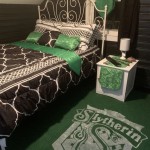How To Make Decorative Signs For Home
Decorative signs add personality and charm to any home. Creating personalized signs allows for customization to match specific décor styles and interests. This process can be a rewarding DIY project, offering a creative outlet while producing unique home décor pieces. This article will outline various methods and materials for creating decorative signs, providing a comprehensive guide for both beginners and experienced crafters.
Planning and Design
Before beginning the construction process, careful planning is essential. The first step involves determining the sign's purpose and desired aesthetic. Consider the room where the sign will be displayed and the existing décor. This will inform the choice of materials, colors, and overall design. Sketching the design on paper can help visualize the final product and ensure proper proportions.
Choosing the Right Materials
The material selection depends on the desired look and feel of the sign. Wood offers a rustic and classic appeal, available in various types like pine, cedar, and reclaimed wood. Metal signs provide a more industrial or vintage aesthetic. Other options include slate, acrylic, and fabric, each offering unique characteristics. The chosen material will impact the tools and techniques required for construction.
Wood Signs: Techniques and Tips
For wooden signs, sanding the surface smooth is crucial for a professional finish. Applying a primer before painting helps the paint adhere better and creates a more even color. Various painting techniques can be employed, including stenciling, freehand painting, and using transfer paper for intricate designs. Sealing the finished sign with a protective varnish or sealant will prolong its lifespan and enhance its durability.
Metal Signs: Working with Different Metals
Metal signs require different techniques depending on the metal type. Steel and aluminum are common choices. Pre-cut metal sheets can be purchased from craft stores. Techniques for decorating metal signs include painting with specialized metal paints, etching designs using etching cream, and using metal stamps to create embossed lettering. Rust-oleum paints are often preferred for their durability on metal surfaces.
Fabric Signs: Embracing Textile Art
Creating signs from fabric offers a unique and softer aesthetic. Burlap, canvas, and linen are popular choices. Techniques include painting directly onto the fabric with fabric paint, using stencils, or applying iron-on transfers. Embroidery can also be used to create intricate designs. Stretching the fabric over a wooden frame provides structure and a clean presentation.
Adding Embellishments
Embellishments can enhance the visual appeal of the sign. These can include ribbons, twine, decorative buttons, small wooden pieces, or metal accents. Consider the overall design and choose embellishments that complement the sign's style and purpose. Securely attaching these elements is crucial for long-lasting results. Hot glue, wood glue, or strong adhesive are recommended depending on the materials used.
Lettering Techniques
Lettering is a key element of many decorative signs. Various techniques can be used to achieve different styles. Freehand painting allows for a personalized touch but requires a steady hand. Stencils provide a more precise and uniform look, especially for intricate fonts. Vinyl lettering offers a professional and clean finish. Transfer paper can be used to transfer printed designs onto the sign's surface.
Hanging and Displaying the Sign
Once the sign is complete, consider the best way to hang or display it. Sawtooth hangers or D-rings are commonly used for hanging signs on walls. For freestanding signs, ensure the base is stable and level. The placement of the sign should complement the surrounding décor and be easily visible. Consider the lighting in the room and choose a location that highlights the sign's features.
Safety Precautions
When working with tools and materials, safety should always be a priority. Wear appropriate safety glasses when using power tools or working with materials that could produce dust or debris. Gloves should be worn when handling paints, stains, or other chemicals. Ensure adequate ventilation when working with paints or other materials that produce fumes. Following manufacturer's instructions for all materials and tools is essential for safe and effective use.
Exploring Different Styles
Different design styles can be achieved through varying techniques and materials. A rustic farmhouse style can be achieved using reclaimed wood, distressed paint, and simple lettering. A modern minimalist design might utilize clean lines, simple fonts, and a monochromatic color palette. Vintage-inspired signs can incorporate distressed finishes, antique embellishments, and classic typography. Exploring different styles allows for creative expression and the creation of unique and personalized home décor.
Maintaining and Cleaning Decorative Signs
Proper maintenance will ensure the longevity of the decorative sign. Dust regularly with a soft cloth. For wooden signs, avoid placing them in direct sunlight or humid environments to prevent warping or fading. Clean painted surfaces with a damp cloth and mild soap if necessary. Metal signs can be cleaned with a damp cloth and metal polish if desired. Fabric signs may require spot cleaning or gentle hand washing depending on the fabric type. Following these guidelines will help maintain the sign's appearance and preserve its beauty for years to come.

How To Make Decorative Signs For Your Home Elle Cherie

Win A Handmade Sign With Custom Of Color Paint Fynes Designs

Pallet Wood Sign House By Hoff Signs Diy

4 Easy To Make Diy Wood Sign Blanks For Silhouette Projects School

23 Best Diy Signs Sign Ideas

How To Make Easy Diy Wood Signs

23 Best Diy Signs Sign Ideas

How To Create A Diy Directional Sign The Home Depot

Buy Redeemed Wood Sign Natural One Word In

Custom Neon Signs For Home Decor Led Wall Art Light







